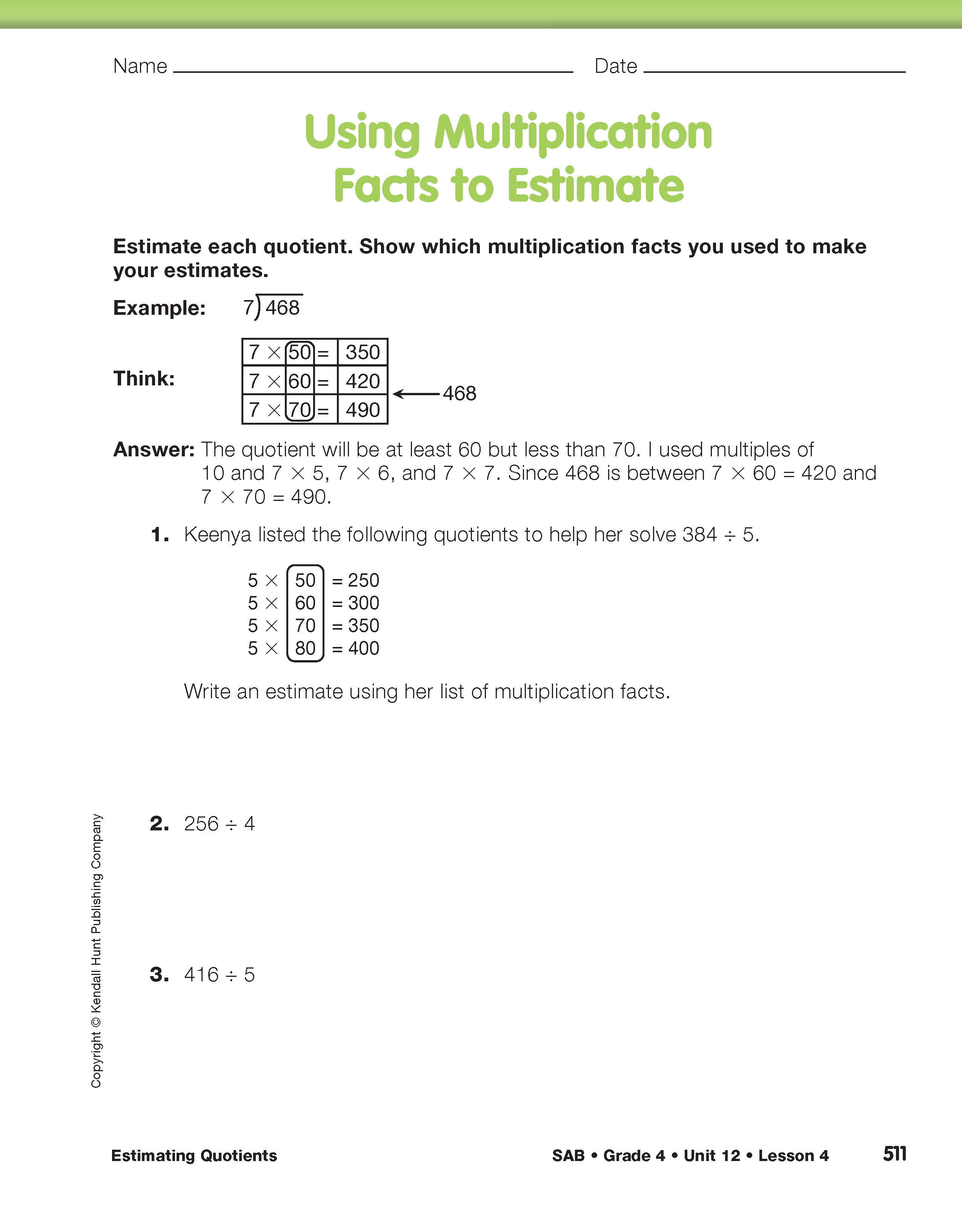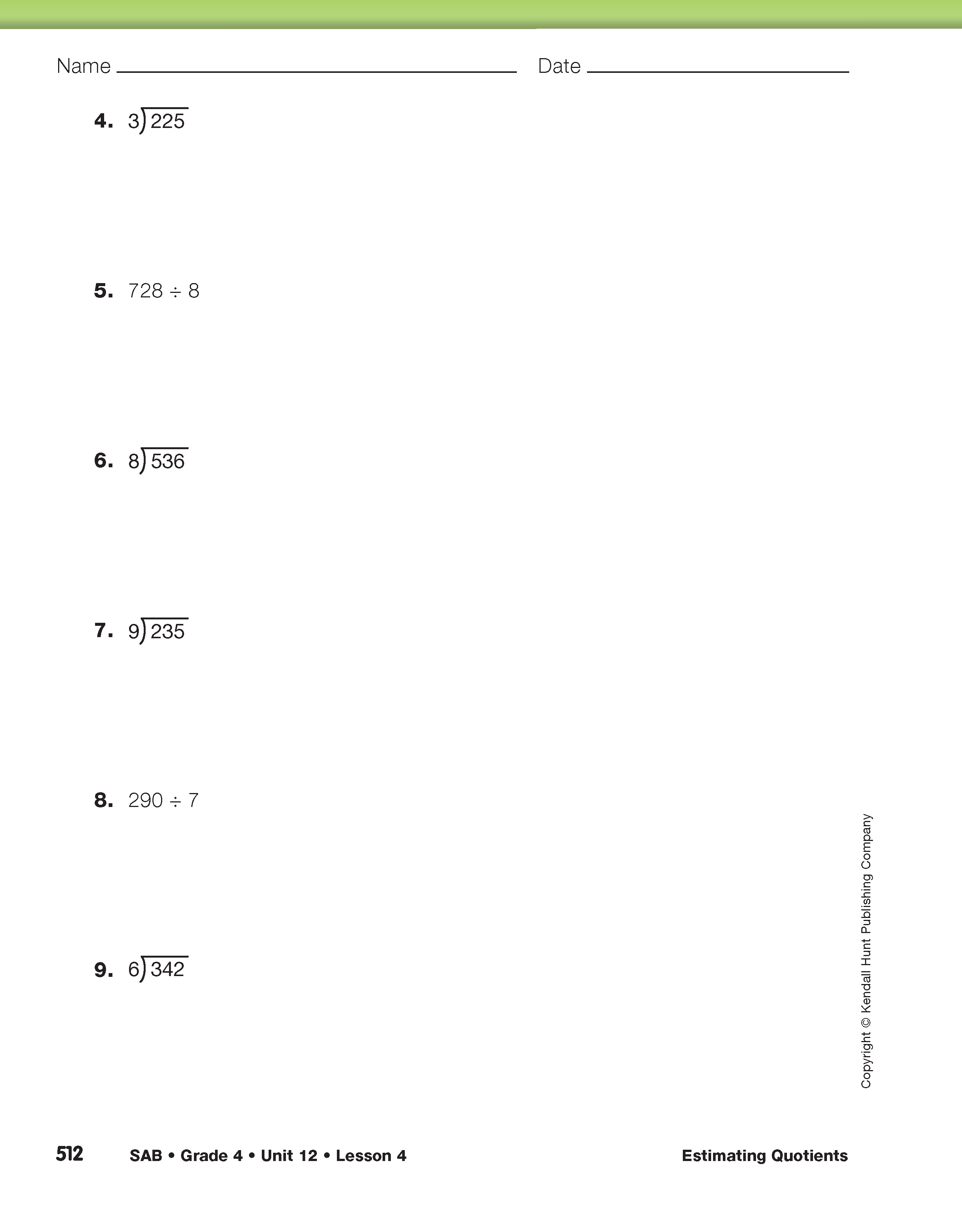Estimating Quotients
Est. Class Sessions: 1Developing the Lesson
Strategies to Estimate Quotients. Ask students to work in pairs. Assign one or two problems from Questions 1–6 in the Student Guide to each pair. Be sure each problem is assigned to at least one pair of students. After students have had a chance to solve their assigned problems, ask each group to share their problem, the solution, and how they checked if their answer was reasonable.
Some students will estimate using convenient numbers to check for reasonableness and others might estimate using obvious multiplication facts to check their solution. Help students identify and describe the similarities and differences in their solutions.
Ask the class to take a closer look at Question 6 by writing the following problem on the board:

Ask:
Using Multiplication to Estimate. These questions lead to a discussion about estimating with division. Tell students that they can estimate answers to division problems by making an educated guess using multiplication facts, fact families, and multiples of 10. Then test the guess using multiplication. The product can then help with making a better guess.
Ask students to refer to the Using Multiplication Facts to Estimate pages in the Student Activity Book. Show a display of the first page. Compare the class's estimates for  with the one shown on the page.
with the one shown on the page.
Solve the first problem from this page in class together before asking students to complete the remaining problems independently or in groups.
As students think about their estimates to Question 1, ask:
Students may report an estimate as a single number or as lying within a range between two numbers. Encourage them to do both. For Question 1, a good estimate might be either 70 or a number between 60 and 70. If estimates are given as a range, push students to think about which end of the range the answer lies closer to. Reasonable estimates will also help students find good initial partial products for solving division problems by paper-and-pencil methods in lessons to come.















